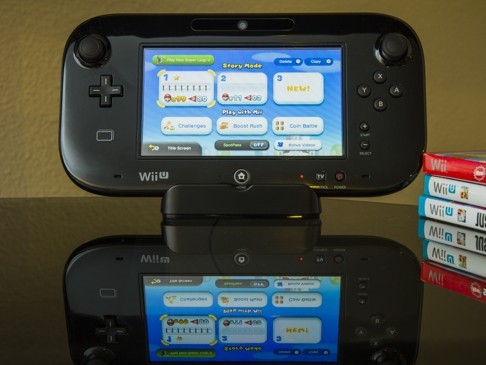
Where will the video gamers of tomorrow come from?
The console industry seems happier currently to cater mainly to existing players rather than convert casual players or attract new ones

The newest Call of Duty title raked in US$550 million globally in its first three days on the market, a figure that its publisher, Activision Blizzard, touted as the largest entertainment launch of the year – bigger than any movie or album. Days later, game studio Bethesda Softworks said its new Fallout 4 could bring in sales topping US$750 million this holiday season.
But the blockbuster sales numbers obscure the video game industry’s Achilles’ heel: sales continue to be driven by the hard-core gaming audience that’s been playing the same or similar titles for years.
A blockbuster Hollywood film tends to attract a wide and diverse audience, one that cuts across race, gender, age and income lines. Blockbuster video games have more of a niche market.

What’s more, the age of the most dedicated game player isn’t getting any younger, according to US industry trade group the Entertainment Software Association. The average age of the gamer in 2013 was 30. In 2015 it’s 35. It may be indicative of a devoted audience that’s growing up but not necessarily growing outward.
“In the Western advanced industrial nations, they’re basically hitting the same customer bases,” says Lewis Ward, a video game industry analyst at research firm IDC. “Their opportunity for growth is in developing markets. To grow, these consoles have to push into the developing economies much more so than they have in the past.”
It’s a pivotal time for the industry, as players are increasingly splintered among the devoted – those who invest in expensive home consoles or computer systems – and the curious who explore games on mobile phones.

“In the past, the computer was considered the entry point for gaming for most kids, but the game has changed now that mobile has moved into that position,” the company says.
And therein lies a risk. We’re in the midst of an era when mainstream console games are designed almost exclusively for dedicated console gamers. The brightly gleaming spacecraft of Star Wars Battlefront may be enticing to non-gamers, but it’s not simple enough to just pick up and play. Consider it a mainstream niche – a niche with a large base, to be fair.
The PlayStation 4 and Xbox One are now two years old. Adoption for this console generation has been brisk. Industry analysts note that the two game systems are selling at a faster pace than the PlayStation 3 and Xbox 360 in the US.

Although Microsoft hasn’t divulged its updated Xbox One sales figures, Sony said last month that it had sold 30.2 million PlayStation 4 units worldwide. Earlier this year, research firm Strategy Analytics estimated that more than 50 million households worldwide could have PlayStation 4 or Xbox One units by year’s end.
Still, there are red flags. Overall, the number of worldwide console players has declined by about 5 per cent over the past year, according to a midyear report from Strategy Analytics. This is due in large part to the lack of success of Nintendo’s Wii U, which has sold just 10.7 million consoles worldwide since its 2012 launch. The original Wii sold 101 million units, and the Wii U’s failure has hurt the console sector as a whole.

Console gaming, Strategy Analytics wrote in its report, is becoming “mostly limited to the core gaming audience”.
Many believe that the bulk of PlayStation 4 and Xbox One sales thus far have come from those who owned an older console. According to Ward, that helps explain why Microsoft this holiday season is emphasising the console’s ability to play older Xbox 360 titles.
Microsoft is aggressively pricing select Xbox One bundles at US$299 this Christmas and Sony is selling the PlayStation 4 at US$50 less than last year. Both moves are seen as efforts, at least in part, to make console sales more attractive to new players.
Console games represent some of the industry’s most immersive experiences and grandest displays of technology. Yet there are numerous hurdles to overcome for those new to the medium. Whereas film, television and music have become easier and cheaper to engage with, thanks to the rise of streaming services, getting into big-budget video games remains challenging and expensive.
Want to see Star Wars: Episode VII – The Force Awakens? It’s easy: go to the cinema and buy a ticket. But let’s say you want to check out Star Wars Battlefront. If you don’t already own a console, Sony is marketing a US$349 bundle that includes the game. Then plan to drop an extra US$50 or US$60 for the privilege of playing online, which you’ll need for a multiplayer-focused title like Battlefront.

What you’re going to see, perhaps, are games like Halo 5: Guardians, which make little sense to those who haven’t already invested a decade in Halo lore. Blast aliens and explore planets, but for much of the game don’t expect to know who, what or why. Even Rise of the Tomb Raider, one of the year’s strongest, most focused games, necessitates the complex mastery of controlling a character as well as an in-game camera. There’s often an hour or so of tinkering with a new game to get the balance of the controls right.
Fans of any good action-drama would no doubt be interested in the continuing adventures of Lara Croft, but there’s a learning curve. Without a system like the Nintendo Wii courting non-gamers, the console industry is starting to appear interested in coddling the fans it already has rather than courting new ones.
Right now, a repeat of what happened in late 2006 seems unlikely. That’s when Nintendo released its Wii, which wowed gamers and non-gamers alike with its Wii Sports. Suddenly, console gaming had expanded to a whole new group of users, making the Wii in short supply that Christmas. The Wii was viewed as a family device rather than one aimed at the hard-core gamer.
Ultimately, the Wii was a hit because it captivated the general public, showing that a simple wave of the arm could lead to new ways to play. It was a console, yes. But it was one with the training wheels this current generation thus far lacks.
Los Angeles Times